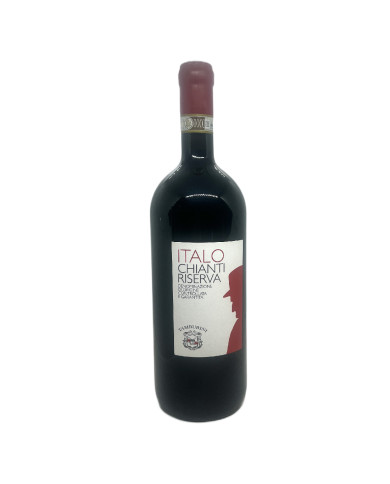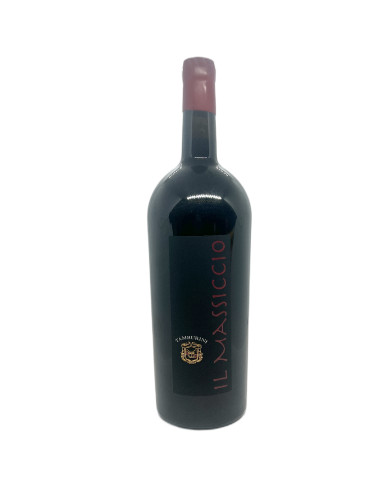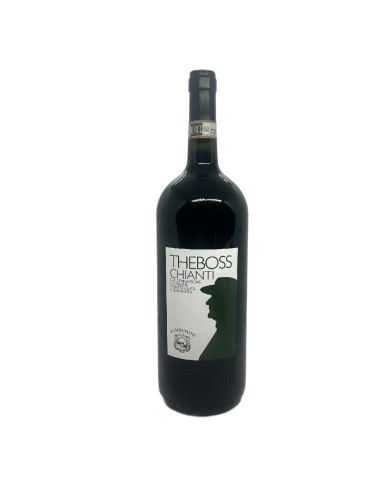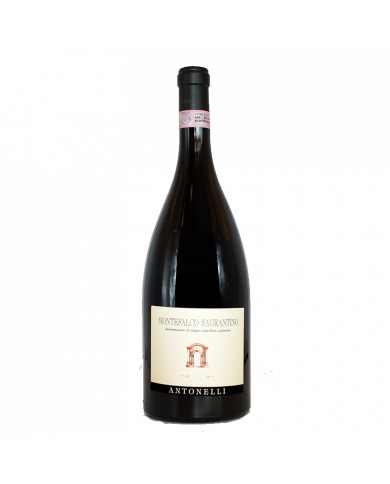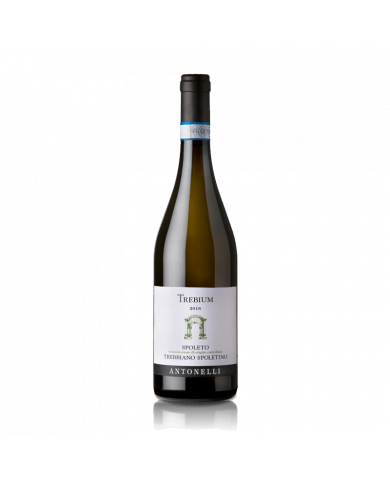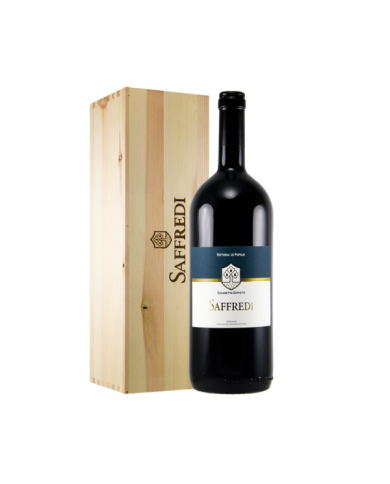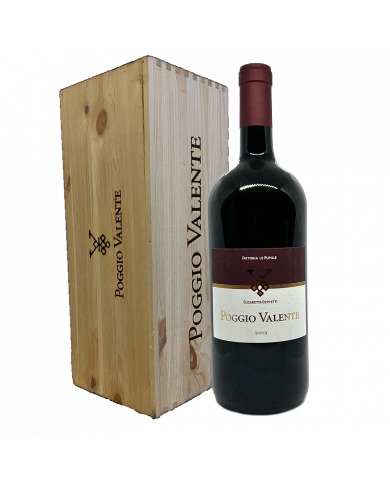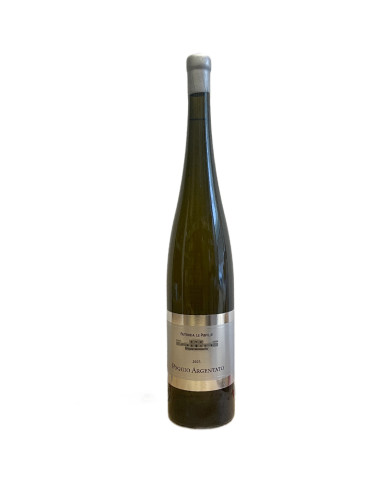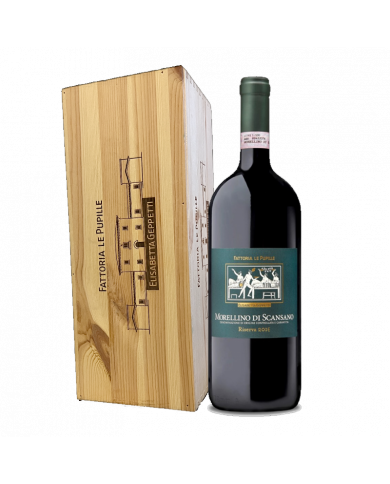Denomination: THE BOSS Chianti Docg Grapes: Sangiovese and Canaiolo. Suggested pairings: Cold cuts and cured meats, roast chicken, vegetable soups and semi-mature cheese. Alcohol: 13.5% Vol. Format: 0.75 litres. Serving temperature: 18┬░C. Typology: Chianti DOCG.
The Sagrantino vine, cultivated for centuries exclusively in Montefalco, seems to have been brought there from Asia Minor by the followers of S. Francesco.
The Sagrantino vine, cultivated for centuries exclusively in Montefalco, seems to have been brought there from Asia Minor by the followers of S. Francesco.
Trebbiano Spoletino is a typical variety of the territory that extends between Montefalco, Trevi and Spoleto; perhaps the name derives from ŌĆ£TrebiumŌĆØ, Trevi in Latin.
Saffredi is a robust, rich and complex Supertuscan, produced with a Bordeaux blend and aged in barrique for 18 months. Ample and intense hints of wild berries, spices and balsamic herbs emerge from a round and velvety texture, of great balance and persistence: an exuberant expression of the Tuscan Maremma
Compact ruby red. The bouquet reveals the fragrance of red roses, black cherry, blood orange and blackberry. Followed by juniper berries, dried flowers, Tuscan cigars and undergrowth. The tannins are dense and silky which develop on a fresh and savory base. Persistent finish on blackcurrant echoes.
Poggio Argentato embodies the essence of Maremma: its land, its unique light, the breeze from the nearby sea, all narrated by a fragrant and fresh white wine, through the language of Northern vines. The singular blend of Sauvignon Blanc, Petit Manseng, Semillon and Traminer make Poggio Argentato a refined, elegant and versatile wine, perfect for the summer but also throughout the year.
Compact ruby red. The bouquet reveals the fragrance of red roses, black cherry, blood orange and blackberry. Followed by juniper berries, dried flowers, Tuscan cigars and undergrowth. The tannins are dense and silky which develop on a fresh and savory base. Persistent finish on blackcurrant echoes.
Dark ruby red. The aromas let emerge hints of ripe berries, blood orange, maraschino cherries and aromatic herbs; fades into tones of licorice, black peppercorns and dark chocolate. The taste is full, enveloping and vigorous, with a very fine tannic texture. Persistent finish on flavors of rhubarb and myrtle.
Large format wines are a popular choice for special occasions and for wine collectors. They come in different sizes and offer a variety of benefits over standard bottles. In this article, we'll explore everything there is to know about large format wines, from the benefits to storage and purchase.
The advantages of large format wines
Large format wines offer numerous advantages compared to standard bottles. Firstly, most wines in large formats age better than in standard bottles. This is because the amount of oxygen entering the bottle is less than in standard bottles. Additionally, the greater quantity of wine in a single container means that temperature fluctuations are less significant, reducing the risk of damage to the wine.
Secondly, large format wines are an ideal choice for special occasions. A large bottle quickly becomes the center of attention and makes an impression on guests. Also, one large bottle is much easier to handle than many smaller bottles. For example, if you're hosting a dinner party for a large group, you can use a few large bottles to make serving easier.
Dimensions of large format wines
Large format wines are available in different sizes, each with a specific name:
Magnum : 1.5 litres, equal to two standard bottles
Jeroboam : 3 litres, equal to four standard bottles
Rehoboam : 4.5 litres, equal to six standard bottles
Methuselah : 6 litres, equal to eight standard bottles
Salmanazar : 9 litres, equal to twelve standard bottles
Balthazar : 12 litres, equal to sixteen standard bottles
Nebuchadnezzar : 15 litres, equal to twenty standard bottles
Conservation of large format wines
The conservation of large format wines is an important aspect to consider. Because these bottles are larger than standard bottles, storing them can be trickier. Most wineries don't have shelves or spaces suitable for large bottles, so you need to plan ahead.
Also, large bottles may take longer to adjust to the ambient temperature in which they are stored. To avoid sudden changes in temperature, it is important to store large bottles in a cool, dry place.
Purchase of large format wines
Buying large format wines can be an excellent choice for wine collectors and for special occasions. However, it is important to pay attention to the origin of the bottles. Large bottles can be more susceptible to counterfeiting than standard bottles, so it's important to buy from reputable, reputable sellers.
What are wines in large formats?
Large format wines are bottles of wine that have a higher capacity than the classic 750 ml bottles. There are a number of larger wine bottle sizes including the Magnum (1.5 litres), Double Magnum (3 litres), Jeroboam (4.5 litres), Rehoboam (4.5 litres), Methuselah ( 6 litres), the Salmanazar (9 litres), the Balthazar (12 litres) and the Nebuchodonosor (15 litres).
Why choose wines in large formats?
There are many reasons to choose a bottle of wine in a larger format than the classic 750ml bottles. Firstly, wine in large formats has greater stability than standard bottles, thanks to the greater quantity of wine present in the bottle and the lower quantity of air that comes into contact with the wine.
Secondly, wines in large formats have a slower evolution, which means they can be kept for a longer period without undergoing any alteration. Furthermore, these wines have greater harmony and balance than standard bottles, thanks to the greater contact surface between the wine and the cork.
Finally, wines in large formats are ideal for special occasions, such as weddings, anniversaries, birthdays or corporate events, because they have a greater visual impact and are able to satisfy the palate of a greater number of people.
How to choose a large format wine?
Choosing a large format wine depends on the type of wine and personal needs. In general, the wines best suited to larger formats are those that require a longer aging period, such as structured red wines, complex white wines or sweet dessert wines.
Furthermore, it is important to choose a high quality wine, because the greater quantity of wine present in the bottle also increases the possibility that any defects will appear. It is therefore important to buy wines in large formats from reliable retailers who offer guarantees on the quality of the wine and its conservation.
Finally, it is important to consider the number of people who will participate in the event, in order to choose the right bottle format. For example, a bottle of Magnum (1.5 litres) is enough for around 10 people, while a bottle of Balthazar (12 litres) can cater for up to 100 people.
In conclusion, wines in large formats are an excellent choice for special occasions and for wine collectors, thanks to their greater stability, their ability to evolve more slowly and their ability to satisfy the palate of a greater number of people.

